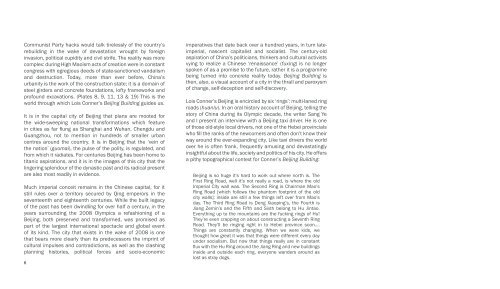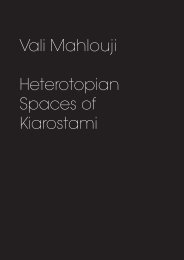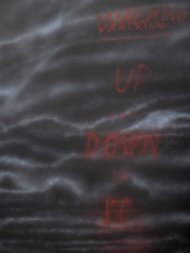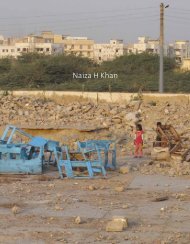Beijing Building Lois Conner - Rossi & Rossi
Beijing Building Lois Conner - Rossi & Rossi
Beijing Building Lois Conner - Rossi & Rossi
Create successful ePaper yourself
Turn your PDF publications into a flip-book with our unique Google optimized e-Paper software.
Communist Party hacks would talk tirelessly of the country’s<br />
rebuilding in the wake of devastation wrought by foreign<br />
invasion, political cupidity and civil strife. The reality was more<br />
complex: during High Maoism acts of creation were in constant<br />
congress with egregious deeds of state-sanctioned vandalism<br />
and destruction. Today, more than ever before, China’s<br />
urbanity is the work of the construction state; it is a domain of<br />
steel girders and concrete foundations, lofty frameworks and<br />
profound excavations. (Plates 8, 9, 11, 13 & 19) This is the<br />
world through which <strong>Lois</strong> <strong>Conner</strong>’s <strong>Beijing</strong> <strong>Building</strong> guides us.<br />
It is in the capital city of <strong>Beijing</strong> that plans are mooted for<br />
the wide-sweeping national transformations which feature<br />
in cities as far flung as Shanghai and Wuhan, Chengdu and<br />
Guangzhou, not to mention in hundreds of smaller urban<br />
centres around the country. It is in <strong>Beijing</strong> that the ‘vein of<br />
the nation’ (guomai), the pulse of the polity, is regulated, and<br />
from which it radiates. For centuries <strong>Beijing</strong> has been home to<br />
titanic aspirations, and it is in the images of this city that the<br />
lingering splendour of the dynastic past and its radical present<br />
are also most readily in evidence.<br />
Much imperial conceit remains in the Chinese capital, for it<br />
still rules over a territory secured by Qing emperors in the<br />
seventeenth and eighteenth centuries. While the built legacy<br />
of the past has been dwindling for over half a century, in the<br />
years surrounding the 2008 Olympics a refashioning of a<br />
<strong>Beijing</strong>, both preserved and transformed, was promised as<br />
part of the largest international spectacle and global event<br />
of its kind. The city that exists in the wake of 2008 is one<br />
that bears more clearly than its predecessors the imprint of<br />
cultural impulses and contradictions, as well as the clashing<br />
planning histories, political forces and socio-economic<br />
imperatives that date back over a hundred years, in turn lateimperial,<br />
nascent capitalist and socialist. The century-old<br />
aspiration of China’s politicians, thinkers and cultural activists<br />
vying to realize a Chinese ‘renaissance’ (fuxing) is no longer<br />
spoken of as a promise to the future, rather it is a programme<br />
being turned into concrete reality today. <strong>Beijing</strong> <strong>Building</strong> is<br />
then, also, a visual account of a city in the thrall and paroxysm<br />
of change, self-deception and self-discovery.<br />
<strong>Lois</strong> <strong>Conner</strong>’s <strong>Beijing</strong> is encircled by six ‘rings’: multi-laned ring<br />
roads (huanlu). In an oral history account of <strong>Beijing</strong>, telling the<br />
story of China during its Olympic decade, the writer Sang Ye<br />
and I present an interview with a <strong>Beijing</strong> taxi driver. He is one<br />
of those old-style local drivers, not one of the Hebei provincials<br />
who fill the ranks of the newcomers and often don’t know their<br />
way around the ever-expanding city. Like taxi drivers the world<br />
over he is often frank, frequently amusing and devastatingly<br />
insightful about the life, society and politics of his city. He offers<br />
a pithy topographical context for <strong>Conner</strong>’s <strong>Beijing</strong> <strong>Building</strong>:<br />
<strong>Beijing</strong> is so huge it’s hard to work out where north is. The<br />
First Ring Road, well it’s not really a road, is where the old<br />
Imperial City wall was. The Second Ring is Chairman Mao’s<br />
Ring Road [which follows the phantom footprint of the old<br />
city walls]: inside are still a few things left over from Mao’s<br />
day. The Third Ring Road is Deng Xiaoping’s, the Fourth is<br />
Jiang Zemin’s and the Fifth and Sixth belong to Hu Jintao.<br />
Everything up to the mountains are the fucking rings of Hu!<br />
They’re even crapping on about constructing a Seventh Ring<br />
Road. They’ll be ringing right in to Hebei province soon….<br />
Things are constantly changing. When we were kids, we<br />
thought how great it was that things were different every day<br />
under socialism. But now that things really are in constant<br />
flux with the Hu Ring around the Jiang Ring and new buildings<br />
inside and outside each ring, everyone wanders around as<br />
lost as stray dogs.<br />
It is this world of expanding rings that <strong>Lois</strong> <strong>Conner</strong> first entered<br />
nearly three decades ago. Since then she has, through her<br />
work, tracked the outward reverberation of the Rings of<br />
<strong>Beijing</strong>. Old Peking, the city of dynastic creation that was<br />
slowly modernized during the Republican years, was originally<br />
built on a grid, one whose geometry was determined by the<br />
points of the compass. Since the 1980s, however, it is in the<br />
boastful, upward thrust of high-rise construction that <strong>Beijing</strong><br />
has been built. In the patterns of these vertical frames, too,<br />
<strong>Conner</strong> investigates what lies beneath the integument of the<br />
contemporary city, searching for a lost metropolis whose past<br />
sensibility lies as a gossamer over the exoskeletons of today’s<br />
leviathan signature structures.<br />
Engineered around the imperial throne and the south-facing<br />
emperor, the city’s four cardinal directions of north, south,<br />
east and west were not only points on the compass, but the<br />
means by which people oriented themselves, their houses,<br />
their lives and their movements. To ‘not be able to find north’—<br />
zhaobuzhao bei—is a colloquial <strong>Beijing</strong> expression that is both<br />
practical and metaphorical. The rings have confounded the<br />
grid, and true north no longer exists.<br />
The taxi driver is scathing in his observations of the new world<br />
that has sprung up around him over the past decade. While<br />
visitors may marvel, older residents are readily appalled by the<br />
wilful dismemberment of the body of <strong>Beijing</strong>:<br />
This <strong>Beijing</strong> of ours was (designed according to the form of<br />
the god) Nezha—three-headed, six-armed Nezha with his feet<br />
on wind-fire wheels, golden halberds in his hand, and a sword<br />
and cudgel for defeating demons tucked in his belt. He was<br />
known by everyone—be they in heaven or on earth. From<br />
this you can see we’ve got traitors in our midst: they don’t<br />
like <strong>Beijing</strong>, they think it’s too backward, not friendly enough<br />
towards the foreign devils. We can’t have that these days, can<br />
we? But all the good things have fallen into the hands of the<br />
devils. Which is why the bastards with all their plans have<br />
turned <strong>Beijing</strong> into a bird.<br />
‘Bird’ (niao) is a term that also expresses contempt, disgust<br />
and bastardry in the local patois of <strong>Beijing</strong>. The taxi driver<br />
describes the new contours of the city and its recently famous<br />
iconic buildings, many of which feature in <strong>Lois</strong> <strong>Conner</strong>’s work:<br />
The bird’s legs are stabbed into the East Third Ring Road—<br />
the off-kilter ‘big underpants building’ that serves as China<br />
Central TV’s headquarters. (Plates 18, 20 & 34) Its head is<br />
over on the West Ring Road, beak agape—the damn thing<br />
they call the Millennium Monument. Of course, a big bird like<br />
that needs a nest, doesn’t it? Well, the nest has been plonked<br />
down on the North Fourth Ring Road. (Plates 4, 12) On the<br />
radio they even boast that it’s the biggest nest in the world.<br />
Fuck me, but what the hell is so impressive about throwing<br />
scrap metal into a pile?<br />
Of course, a bird needs more than a nest. It needs to eat. So<br />
they built it the Water Cube, a Perspex birdfeeder. Big birds<br />
lay big eggs, and this bastard’s laid its egg right on Chang’an<br />
Avenue—‘China’s Great Whorehouse’. (the Grand National<br />
Theatre, Plate 16)<br />
This garrulous account is a powerful complement to <strong>Beijing</strong><br />
<strong>Building</strong>. For <strong>Conner</strong>’s <strong>Beijing</strong> is only seemingly lyrical; it<br />
conveys too a vision of captured change. Certainly, within the<br />
tireless industry of urban transfiguration it provides precious<br />
moments of contemplation, quietude and respite. But <strong>Conner</strong><br />
evokes a world in which ideas of Chinese identity and its claims<br />
to greatness are, literally, made concrete. Her account of the<br />
6 7











